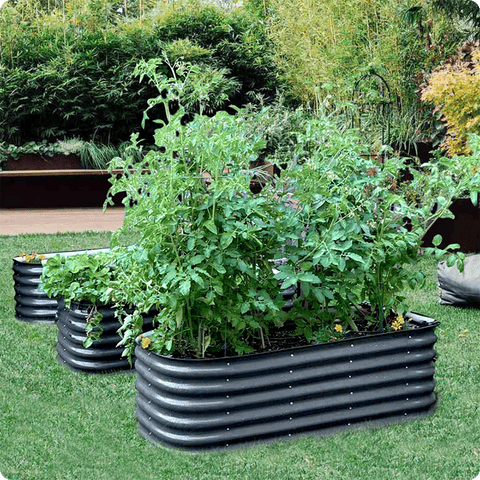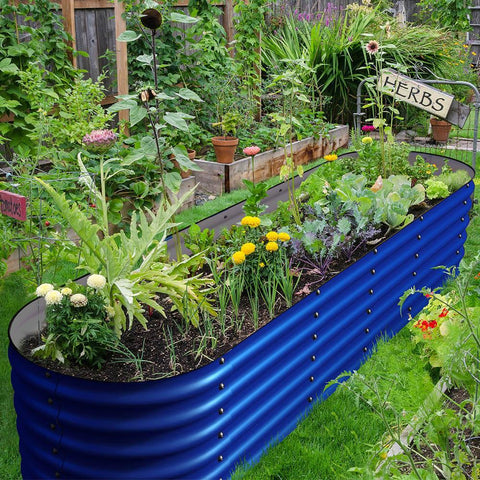How to Use Epsom Salt to Get Rid of Snails and Slugs in the Garden
When your garden beds are infiltrated by snails and slugs, it's time to take action with Epsom salt! Here are methods to drive away these unwanted guests using Epsom salt!
Epsom salt is commonly used in baths to relieve muscle fatigue, but it also has benefits for the garden!
This miraculous product contains properties that can enhance vegetable yields, aid in landscaping, and even improve soil. It not only promotes plant development but also protects the garden! If snails and slugs are common pests in your garden bed, this is a wonderful and natural way to deter them.
Learn how to use Epsom salt to drive away snails and slugs and create a healthier and happier yard!
Materials Needed:
To use Epsom salt for a snail and slug-free yard, you will need some materials. Gather these items for better success!
Epsom salt
Spray bottle
Bucket
Shovel
Pump sprayer
Garden gloves
Why Use Epsom Salt?
Before using Epsom salt to repel snails and slugs, it's essential to understand why and how it works.
Epsom salt is a mineral composed of magnesium sulfate. This substance is actually toxic to many pests and can be used as an insecticide due to its magnesium and sulfur components.
Snails and slugs rely on moisture for survival. When they come into contact with Epsom salt, it dehydrates their skin. This dehydration eventually kills the pests. Additionally, due to the abrasive nature of salt, it harms the skin of several insects, including slugs, preventing them from approaching the substance.
On the other hand, plants need the nutrient magnesium to produce chlorophyll molecules essential for photosynthesis. Since Epsom salt contains a significant amount of magnesium, it deters pests and encourages plant improvement! The sulfate component of Epsom salt also nourishes plants by producing amino acids and enzymes.
Let's see how to use this natural insect repellent to keep those sticky pests away!
Step 1 – Create a Barrier with Epsom Salt to Prevent Snails and Slugs
When snails and slugs are approaching, the first thing to do is to prevent them from entering the garden.
To do this, pour a line of Epsom salt on the outside of the garden (or around susceptible plants). This will ensure that when snails and slugs arrive, they are stopped before even entering your garden, acting as a barrier.
If snails or slugs cross the line, the dehydrating and abrasive properties of the salt will kill them before they harm your plants.
Clean up the dead snails and slugs by hand (wear garden gloves) or leave them for local wildlife to consume!

Step 2 – Directly Apply Epsom Salt Spray on Plants
For snails and slugs that have already harmed the plants, you need to address them directly. Create a spray solution with Epsom salt and water that can be applied directly to affected plants.
To make this spray, add 2 to 1 tablespoons of Epsom salt to 1 gallon of water. Mix the solution until the Epsom salt dissolves, then pour it into a spray bottle. Once ready, simply spray it directly on the affected plants! Once the mixture is applied to the plants, the solution will dehydrate and eliminate snails and slugs.
Not sure how the spray will affect your vegetation? Spray the solution on a small part of the plant to see how it reacts. Once you see favorable results, proceed with spraying!
As mentioned earlier, Epsom salt provides incredible benefits beyond pest control. These salts offer additional nutrients (magnesium and sulfur) that promote growth, improve cell structure, and may even enhance the flavor of certain produce. Specifically, it is known that tomatoes, roses, and pepper plants love a dose of Epsom salt!
Step 3 – Address Pests on a Larger Scale
If snails and slugs extend beyond your garden beds and infiltrate your lawn, Epsom salt can be used on a larger scale.
Instead of buying snail and slug pesticides that add harmful chemicals to your yard and environment, why not use Epsom salt? This natural insect repellent can work wonders and only requires materials and your time/effort to use.
Due to the size of the lawn, more Epsom salt is needed to ensure a higher efficacy in driving away pests. It is said that 3 pounds of Epsom salt is suitable for a 1,250 square foot lawn. Either spread the salt using a fertilizer spreader or create a spray solution and apply it using a pump sprayer.
But what about the impact of these salts on your lawn? Epsom salt on the lawn acts as a natural fertilizer and improves your grass. It adds magnesium to the soil, improving seed germination, and enhances the ability of the lawn to absorb essential nutrients like nitrogen and sulfur. Not to mention, it also repairs depleted soil!

Step 4 – Reapply When Necessary
Over time, your various methods of repelling snails and slugs will need reapplication. However, remember to reapply only when necessary.
While Epsom salt provides many benefits to your plants and lawn, overuse also has downsides. Specifically, if your lawn doesn't need soil improvement, adding more magnesium can lead to nutrient imbalance. Likewise, when Epsom salt is overused, it can cause harm to the environment and become unsustainable.
Considering this, always be cautious when applying Epsom salt to your garden. While snails and slugs are a problem worth solving, it's essential to keep ecological responsibility in mind. Drive Away those Pests!
Tired of seeing your crops suffer from the presence of snails and slugs? Epsom salt is the answer!
When you take the right actions, these pests will no longer be a thorn in your side. Use this natural mineral to create a barrier around your garden beds, protect your lawn, and clear snails and slugs from your vulnerable plants!
